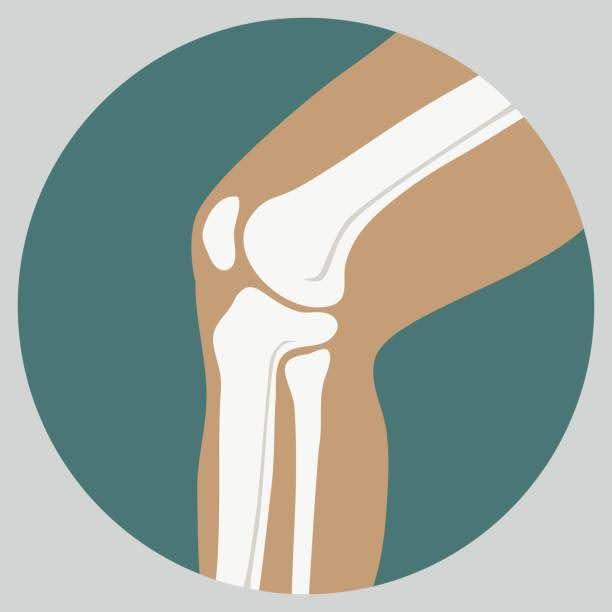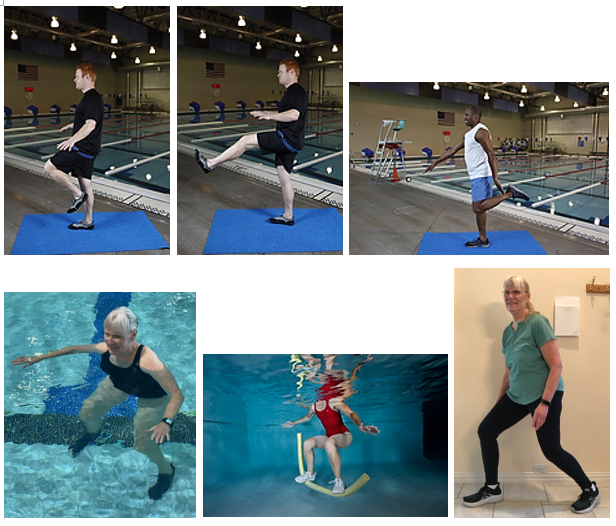TAKE CARE OF YOUR KNEES

Guest article provided by: waterfitnesslessonsblog.com
Knee pain is a common complaint of Seniors. That is because the knee joint is the largest and probably the most stressed joint in the body. It is a hinge joint that allows flexion (bending) and extension (straightening) and a slight amount of rotation. The bones of the knee joint are the femur (the upper bone), the tibia (the lower bone), and the patella (kneecap). The smaller lower leg bone (the fibula) is not part of the knee joint. Ligaments connect the femur and tibia and hold them in place. Two menisci cover the top of the tibia and serve as shock absorbers. Knee pain can be caused by a torn ligament, fractures, a torn meniscus, knee bursitis, patellar tendonitis, a loose body in the knee, a dislocated kneecap, osteoarthritis and other causes. For more information on knee pain symptoms and causes see the article on knees from the Mayo Clinic at https://www.mayoclinic.org/diseases-conditions/knee-pain/symptoms-causes/syc-20350849 The most common cause of chronic knee pain is arthritis (osteoarthritis, rheumatoid arthritis or post traumatic arthritis). A Healthline Report in 2024 says that approximately 700,000 knee replacement surgeries are performed every year in the United States.
STRENGTHEN THE MUSCLES OF THE KNEE
It is not always possible to prevent knee pain, but you can reduce your risk by maintaining a healthy weight, and keeping the muscles that support the knees strong and healthy, since weak muscles are a leading cause of injury. The muscles that support the knees are the 4 muscles of the quadriceps on the front of the thighs and the 3 muscles of the hamstrings on the back of the thighs. The pool is a great place to do exercises for the quadriceps and hamstrings because the buoyancy of the water lifts and supports the body, reducing the stress on the knees. Some good exercises that can be done in the pool for the knees include quad kicks (kicks from the knee), hamstring curls, squats, and lunges. We squat every time we sit down in a chair. Squats can stress the knee if done too deeply, but that is very unlikely in the pool! Vary the squat by having the feet wide apart, hip distance apart or together. You can also have one foot forward more than the other foot. In the pool you can do one-legged squats. For an additional challenge, do your squats standing on a noodle. Lunges can be performed forward, to the side, to the back, or diagonally.

(1, 2) Quad kick. (3) Hamstring Curl. (4) Squat. (5) Squat on a Noodle. (6) Lunge.
EXERCISES TO AVOID
In addition to strengthening the quadriceps and hamstrings, there are some cautions to help you avoid an injury in your water fitness class. Rebounding is good for the knees, but landing with the knees turning inwards causes abnormal forces through the knees. The middle of the knee should align with the second and third toes when landing from a jump. Ballistic hip abduction (cheerleader jumps) puts a lot of pressure on the outside of the knees, and knees are not designed for this stress. Avoid forcefully throwing the knee during a kick. Press your kicks rather than power popping your knees. Eggbeater kicks have a circular motion that puts a lot of torque on the knees, so avoid this exercise.
STRETCHES FOR THE KNEE
It is a good idea to stretch the quadriceps and hamstrings at the end of class. To perform the quad stretch properly, the thighs should be close together and the knee should point toward the floor. Then lift the abdominals, press the hips forward and take the knee slightly back until the stretch is felt. Do not try to bring your heel to your buttocks as this forceful motion can cause a meniscus tear. To stretch the hamstrings, lift the knee, then extend the leg, which is easy to do with the help of the buoyancy of the water. Do not round out the back to increase the stretch. A hamstring stretch can also be done by placing the foot on the pool wall. Exercising your legs to keep your quadriceps and hamstrings strong will reduce your risk of knee problems later on.
Resources: Ruth Sova, MS – Feet Ankle Knees Mini Session 10-06022
Pauline Ivens, MS and Catherine Holder, PT, Do No Harm, 2011
Guest Blogger: Christine Alexander https://waterfitnesslessonsblog.com/
